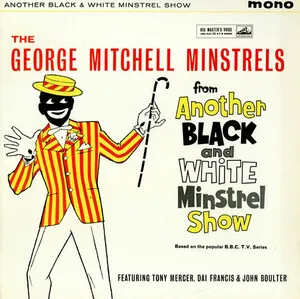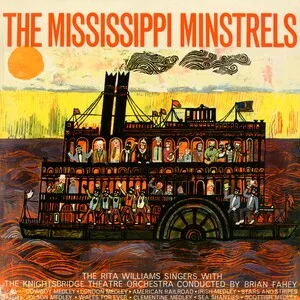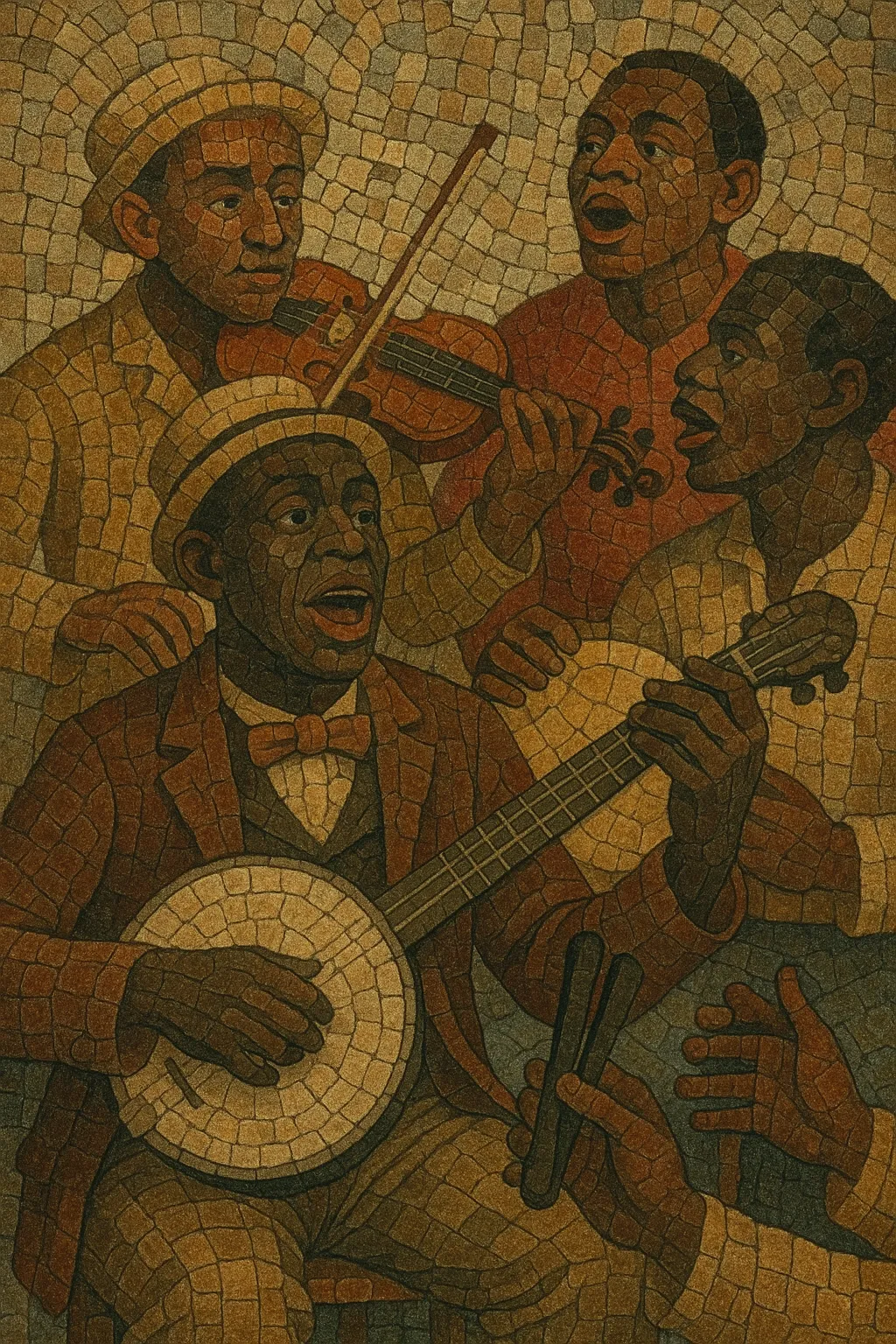
Minstrelsy is a 19th‑century American theatrical music genre centered on variety shows that combined songs, dances, comic banter, and skits. It is historically associated with blackface performance and traffic in racial caricature, which makes it a profoundly problematic yet influential part of U.S. popular music history.
Musically, minstrel troupes favored a small, lively ensemble built around banjo, fiddle, bones (clappers), tambourine, and occasionally concertina or guitar. Songs typically used simple, memorable melodies and strong chorus hooks in verse‑chorus form, often with call‑and‑response patterns and danceable rhythms. The repertoire drew on Anglo‑Celtic balladry and parlor song while adopting syncopations, timbres, and participatory practices that originated in African American music.
Minstrelsy coalesced in the United States in the 1830s as a commercial stage form that mixed Anglo‑Celtic ballad traditions and parlor music with instruments, rhythms, and performance practices drawn from African American culture. Early performers such as Thomas D. 'Daddy' Rice popularized characters like Jim Crow, catalyzing the format’s rapid spread.
By the 1840s, dedicated troupes (e.g., the Virginia Minstrels and Christy’s Minstrels) formalized a three‑part show: an opening company number and 'walkaround', an 'olio' of specialty acts and comic songs, and a narrative afterpiece. The core band—banjo, fiddle, bones, and tambourine—became iconic. Songwriters like Stephen Foster and Dan Emmett supplied repertory that fused catchy verse‑chorus structures with accessible harmonies, helping minstrel songs dominate sheet‑music sales.
While the genre originated in racist caricature, Black artists such as William Henry 'Master Juba' Lane, the Georgia Minstrels, and other African American troupes achieved acclaim, reshaping the music and dance vocabulary from within. Touring circuits carried minstrelsy across the U.S., the U.K., and beyond, influencing British music hall and later vaudeville. Over time, orchestration expanded and the material intersected with emerging styles like ragtime and barbershop.
As vaudeville, musical theater, recordings, and cinema rose, minstrelsy waned but left a deep imprint on American popular song, stagecraft, and entertainment business models. Many song forms, comic tropes, and performance conventions migrated into Tin Pan Alley, country, old‑time, and early jazz circuits. Today, the genre is critically examined for its racist foundations; historically informed performance focuses on musical and choreographic elements while rejecting stereotyped dialect and imagery.
Use a small, lively band: 5‑string banjo (lead rhythm and melodic rolls), fiddle (melodic lead and fills), bones (clappers) and tambourine for groove, plus optional guitar or concertina. Keep textures transparent and percussive.
Write concise verse‑chorus songs with memorable refrains, often designed for audience sing‑along. Consider call‑and‑response between a leader and chorus. For staged sets, sequence an opening chorus, a variety 'olio' of specialty numbers, and a concluding 'walkaround' or dance.
Favor diatonic I–IV–V harmony with occasional secondary dominants; keep progressions simple to highlight melody and rhythm. Melodies should be pentatonic‑leaning and highly singable, with clear phrase arches. Rhythms are buoyant and danceable (2/4 or 4/4), using off‑beat accents and light syncopation; let bones and tambourine articulate backbeats and fills.
Historically, lyrics used dialect caricature; modern, ethical practice avoids racist language and imagery. Instead, write narrative or comic verses in plain diction, focusing on everyday stories, travel, or ensemble camaraderie. Stage numbers with ensemble choruses, simple choreography (clog, jig‑inspired steps), and comic patter between songs.
Honor the banjo‑fiddle groove, call‑and‑response, and participatory energy while explicitly rejecting blackface and stereotyped characterizations. Provide historical context when presenting minstrel‑era repertoire and adapt or replace text where necessary.

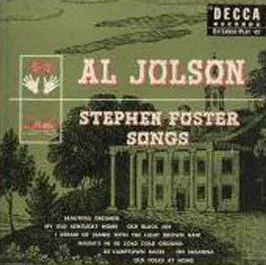
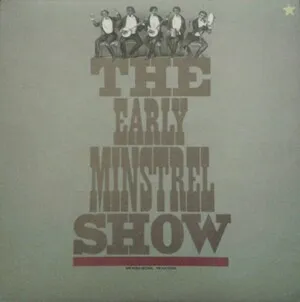
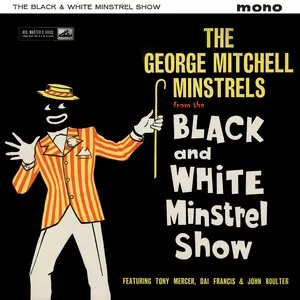
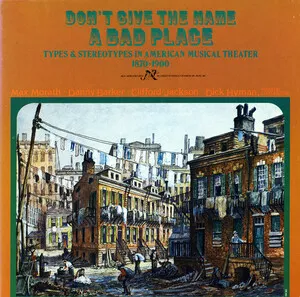%2C%20Cover%20art.webp)
